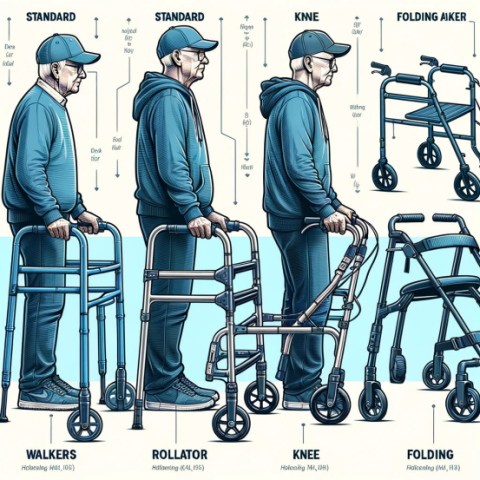Walkers Help Patients Recover Quickly After Surgery: 2024 Guide
Recovering from surgery can be a challenging phase, particularly when it comes to regaining mobility. Rollator walkers are crucial mobility aids that help individuals maintain independence and safety during this time. They support weight, stabilize balance, and reduce the risk of falls by providing additional points of contact with the ground.

Benefits of Using a Walker
Using a walker post-surgery offers numerous benefits:
1. Enhanced Mobility: Walkers provide the necessary support to help users move around, promoting a more active recovery.
2. Injury Prevention: A walker stabilizes the user’s movement, thus reducing the risk of falls and subsequent injuries.
3. Speedier Recovery: Active movement aids in faster recovery by improving circulation and muscle tone.
Types of Walkers
Walkers come in a variety of designs, each suited to different needs:
1. Standard Walkers: Simple frame with four legs, providing sturdy support. Ideal for those who need maximum stability.
2. Rollator Walkers: Equipped with wheels and brakes, rollators are best for those who can walk but need assistance with balance and stamina.
3. Knee Walkers: A great alternative for individuals recovering from lower limb surgeries, offering a platform for resting the knee.
4. Folding Walkers: These are versatile and portable, easy to transport and store, suitable for active individuals.
Each type of walker caters to specific limitations and environments, ensuring users can choose one that best fits their post-surgery recovery path.
Choosing the Right Walker
Selecting the right walker involves several considerations:
1. Assessment of Needs: The user’s mobility limitations and the layout of their living environment need to be understood.
2. Safety Features: Non-slip grips, sturdy frames, and reliable brakes are essential to prevent accidents.
3. Adjustability: A good walker should have adjustable height settings to align with the user’s size for optimal support.
4. Comfort: For those who use walkers extensively, padded handles and seats provide additional comfort.
Using Walkers Effectively
To maximize the benefits of a walker, it’s important to use it correctly:
1. Training with a Professional: Learning proper walker techniques from a healthcare provider ensures safety.
2. Home Preparation: Adapting the home by removing rugs and obstacles can make walker use safer and more efficient.
3. Maintenance Tips: Regularly checking the walker for loose parts and wear ensures it remains safe to use.
Financial Considerations
Walkers can vary widely in price, and it’s important to consider the cost-effectiveness of different models. Many insurance plans cover part or all of the cost of a walker if medically necessary, and rental options are available for short-term use.
Conclusion
Choosing and using the right walker after surgery can be effective for a safe recovery. It is recommended that you consult a healthcare professional to select the most appropriate walker for your individual needs.
During recovery, the use of a walker can improve quality of life and make daily activities safer and more manageable.
In addition to walkers, I think wheelchairs can also help with postoperative recovery. If you are interested, come to our website to purchase.
Media Contact
Company Name: MATESIDE GLOBAL US INC.
Contact Person: Annabel
Email: Send Email
Country: United States
Website: https://vocic.com/


